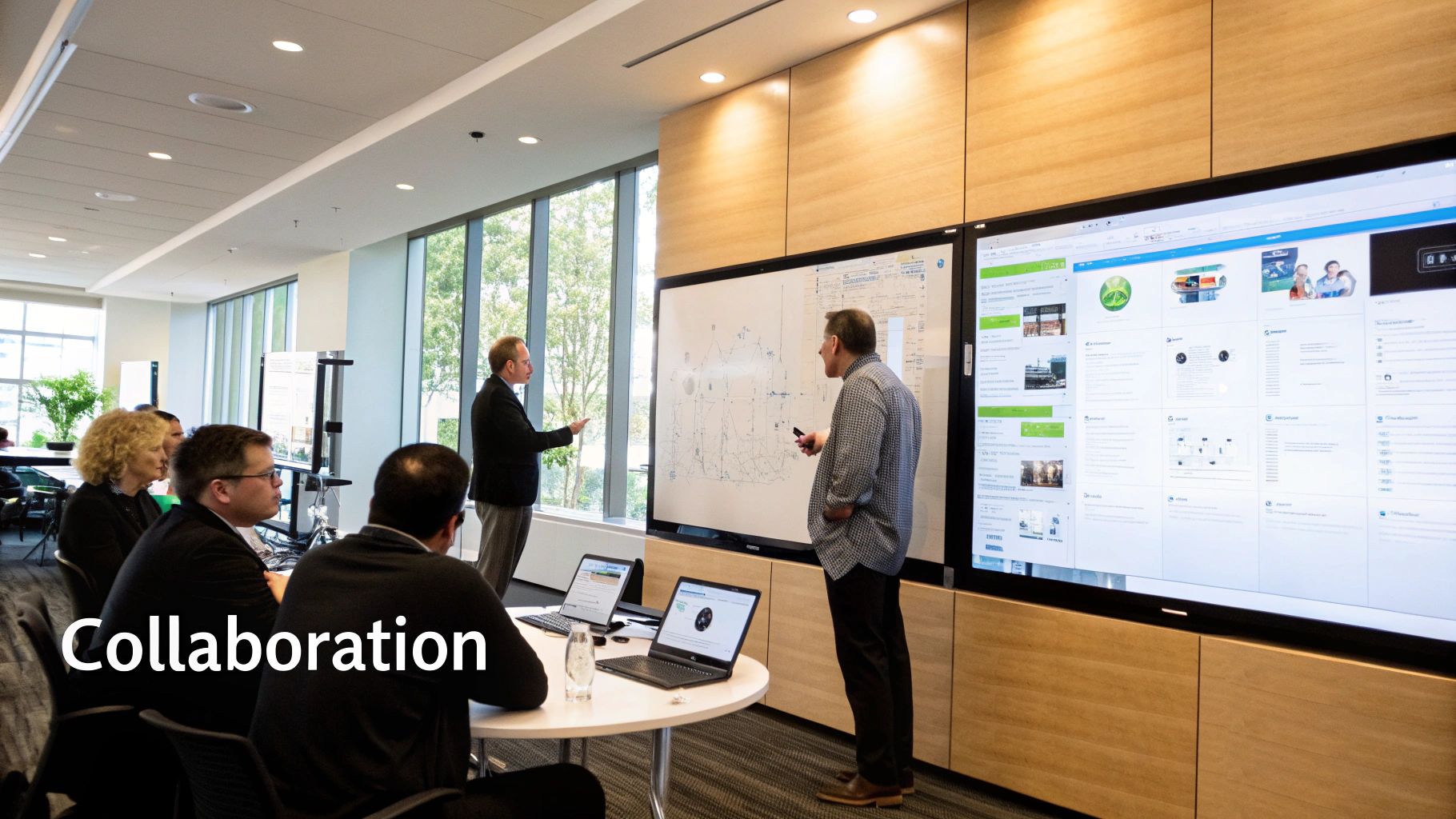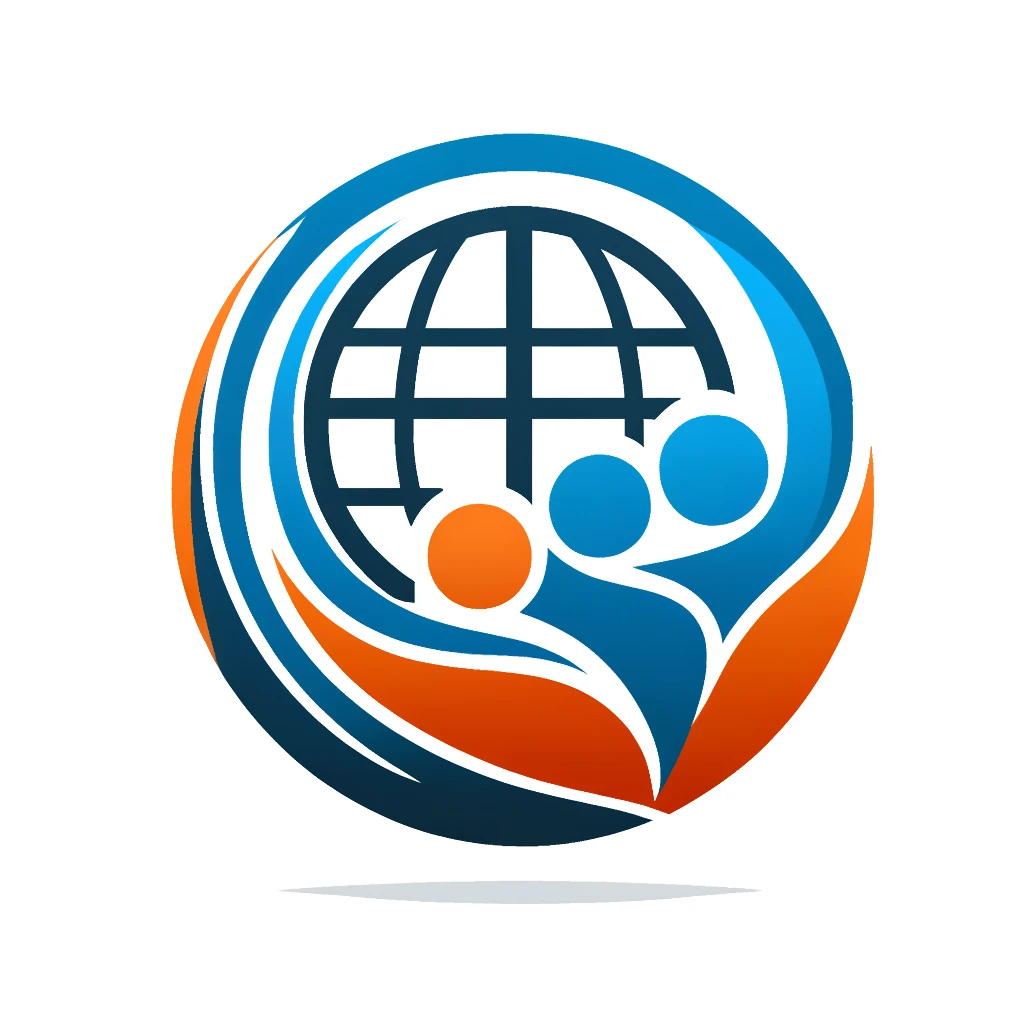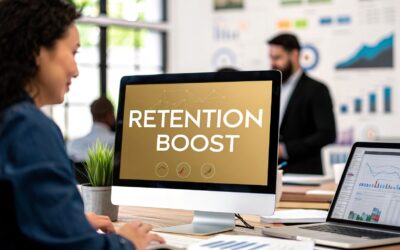The Evolution of HR Business Partners: From Admin to Strategic Advisor

The Human Resources field has dramatically changed. Once a primarily administrative role focused on paperwork and compliance, HR now holds a vital strategic position in any successful organization. This shift is perhaps most visible in the evolution of the HR Business Partner (HRBP).
This evolution has been a gradual, yet powerful, transformation. Initially, HR professionals were seen as process-driven administrators. They managed payroll, benefits, and employee records. But as businesses grew more complex and the importance of human capital became clearer, the need for a more strategic HR function emerged. This is where the HRBP comes in.
The HRBP role started to take shape in the early 2000s. It shifted from a purely administrative focus to a more consultative and strategic one. This transition involved aligning HR practices with business objectives. It also required HRBPs to become trusted advisors to business leaders and drivers of organizational change. By 2010, HRBPs were recognized as key strategic partners, focusing on aligning HR strategies with overall business objectives. In larger organizations, HRBPs typically oversee several hundred to over a thousand employees, depending on the structure. This strategic alignment is essential for driving business results and improving organizational effectiveness. For example, research shows that companies with strong HRBPs often experience better employee retention. This can translate to significant annual savings in recruitment costs. Explore this topic further. By 2020, the role of the HRBP in achieving key business outcomes was even more critical, with more organizations including HRBPs in senior leadership teams.
From Transactional to Transformational
Today's HRBPs are much more than just administrators. They are strategic advisors, change agents, and employee advocates. This multifaceted role demands a special combination of HR expertise and business acumen.
-
Strategic Advisor: HRBPs collaborate closely with business leaders. They develop and implement people strategies that support overarching business goals.
-
Change Agent: They steer organizations through periods of transition. They make sure HR initiatives effectively support organizational change.
-
Employee Advocate: HRBPs champion the needs of employees, creating positive work environments and boosting employee engagement.
Industry Adaptations of the HRBP Role
Specific HRBP responsibilities within an hr business partner job description can differ across industries. A tech startup, for instance, might require an HRBP with a strong focus on talent acquisition and rapid scaling. A more established enterprise, however, might prioritize an HRBP specializing in organizational development and change management. This adaptability makes the HRBP role dynamic and constantly evolving.
This continued evolution highlights the growing recognition that human capital is essential for achieving organizational success. As businesses navigate increasing complexity and constant change, the strategic importance of the HR Business Partner will continue to grow.
Inside the HR Business Partner Job Description: Core Responsibilities

What sets truly exceptional HR Business Partners (HRBPs) apart? It all comes down to their core responsibilities. This section explores the defining characteristics that empower successful, modern HR business partnerships across organizations of all sizes. We'll discover how effective HRBPs bridge the gap between HR expertise and business strategy, transforming organizational goals into actionable, people-focused results.
Balancing Tactical and Strategic Responsibilities
The life of an HR Business Partner involves a delicate balancing act. They must juggle day-to-day tactical HR demands while simultaneously contributing to long-term strategic planning. One moment, an HRBP might be resolving an employee relations issue, and the next, they're crafting a comprehensive talent acquisition strategy. This dual focus demands impeccable organizational skills and the ability to prioritize effectively.
This constant shifting of gears reflects the ever-evolving nature of business needs. To thrive in this dynamic environment, HRBPs must cultivate adaptability and an ability to anticipate future hurdles.
Evolving Responsibilities Across Career Levels
The HR business partner job description is not static; it evolves with each career stage. An entry-level HRBP often concentrates on implementing existing HR programs and providing support to line managers. In contrast, a senior HRBP is more likely to be shaping workforce strategies alongside C-suite executives. This upward trajectory highlights the increasing strategic influence of the HRBP role as experience deepens.
Furthermore, responsibilities can vary significantly based on company size and industry. In smaller companies, HRBPs might wear multiple hats, handling a wide range of duties from recruitment to employee relations. Conversely, in larger organizations, they may specialize in a particular area, such as talent management or organizational development.
To understand how these responsibilities differ, let's examine the table below:
HRBP Responsibilities Across Organizational Levels
This table outlines how HRBP responsibilities evolve from entry-level to strategic leadership positions.
| Organizational Level | Primary Focus | Key Responsibilities | Strategic Impact |
|---|---|---|---|
| Entry-Level HRBP | Operational Support | Implementing HR programs, employee relations, basic reporting | Supports day-to-day HR functions |
| Mid-Level HRBP | Tactical Execution | Talent acquisition, performance management, employee engagement initiatives | Contributes to key HR projects and strategic goals |
| Senior HRBP | Strategic Leadership | Workforce planning, leadership development, organizational design, C-suite advising | Drives organizational change and influences business decisions |
This table illustrates the significant career progression within the HRBP field. As HRBPs gain experience, their focus shifts from operational tasks to strategic leadership, profoundly impacting the organization.
Responsibilities With the Greatest Business Impact
Some HRBP responsibilities hold greater weight in terms of business impact. Strategic workforce planning, for instance, directly affects the organization's capacity to meet future talent demands. Likewise, robust talent management programs can significantly boost employee engagement and retention, leading to substantial savings in recruitment costs.
Moreover, HRBPs who excel at change management can skillfully steer the organization through periods of transition, minimizing disruption and maximizing productivity. By focusing on these crucial areas, HRBPs become invaluable contributors to overall business success.
Prioritizing for Maximum Organizational Value
Successful HRBPs possess a keen sense of prioritization, understanding how to maximize their efforts for optimal organizational value. They identify the initiatives that will deliver the highest return on investment and channel their energy accordingly. This requires a deep understanding of the business landscape and its strategic objectives.
This strategic mindset ensures that HR initiatives are not merely implemented but are deeply aligned with the overarching business strategy. This alignment maximizes HR’s impact on the organization's bottom line. A practical example of this is an HRBP prioritizing leadership development programs that support the company’s expansion plans, ensuring a strong leadership pipeline for future growth.
The Essential HRBP Toolkit: Skills That Drive Business Results

A successful HR Business Partner (HRBP) is more than just an administrator. They're a driving force behind tangible business outcomes. This requires a unique combination of skills, forming a powerful toolkit for navigating today's complex workplace. Understanding these skills is essential for anyone aspiring to excel as an HRBP, and for those building an effective HR business partner job description.
Foundational HR Expertise
A strong HRBP starts with a deep understanding of core HR principles. This foundational knowledge encompasses talent management, employee relations, compensation and benefits, and compliance. For instance, a firm grasp of employment law is crucial for handling sensitive employee relations issues and ensuring legal compliance. This expertise builds credibility, allowing HRBPs to effectively advise business leaders.
In addition, proficiency in HR operations is key. This includes practical experience in areas like recruitment, onboarding, and performance management. These operational skills empower HRBPs to create and implement HR strategies that align seamlessly with broader business objectives.
Business Acumen: The Bridge to Strategic Partnership
HR expertise alone isn't enough. To become true partners with the business, HRBPs need sharp business acumen. This means understanding the industry landscape, the organization's competitive position, and its financial drivers. This knowledge enables them to translate business goals into impactful people strategies.
For example, an HRBP with strong business acumen can analyze market trends to anticipate future talent needs and proactively develop recruitment strategies. They are fluent in the "language of business," comfortable discussing financial metrics, market analysis, and strategic planning, demonstrating the value of HR initiatives in concrete terms.
The Power of Data and Analytics
Analytical skills are vital for today's HRBPs. They need to collect, analyze, and interpret data to understand workforce trends and pinpoint areas for improvement. This might involve analyzing turnover rates to address retention challenges or evaluating employee engagement data to uncover areas of dissatisfaction. This data-driven approach allows HRBPs to make well-informed recommendations and demonstrate the impact of their work.
The ability to transform complex people data into actionable business recommendations is a defining characteristic of a truly effective HRBP. They use data to tell a compelling story, showcasing the link between HR initiatives and tangible business outcomes.
To better visualize the skills necessary for success, let's explore the following table:
Critical Skills for Effective HR Business Partners
This table presents the essential technical, business, and interpersonal skills required for HRBP success.
| Skill Category | Critical Skills | Application in HRBP Role | Development Opportunities |
|---|---|---|---|
| Technical | HRIS Systems, Data Analysis, Reporting | Managing HR data, analyzing trends, creating reports for stakeholders | Training in HR analytics tools, certifications in data analysis |
| Business | Business Acumen, Financial Literacy, Strategic Thinking | Understanding business goals, aligning HR strategies, contributing to strategic planning | Business courses, industry conferences, mentorship programs |
| Interpersonal | Communication, Consulting, Relationship Building | Influencing stakeholders, providing HR guidance, building strong partnerships | Communication workshops, leadership development programs, active listening training |
This table highlights the diverse skill set needed to thrive as an HRBP. Continuous development in these areas is essential for sustained success.
Communication and Influence: The Art of Partnership
Exceptional HRBPs are exceptional communicators and influencers. They adapt their communication style to their audience, seamlessly transitioning from operational discussions with employees to strategic conversations with executives. This requires strong interpersonal skills, active listening, and the ability to build trust and rapport.
Furthermore, HRBPs are skilled influencers. They persuade business leaders to embrace HR recommendations and champion change within the organization. This involves building consensus, navigating challenging conversations, and presenting compelling arguments. These skills, combined with their HR and business knowledge, empower HRBPs to become true strategic partners, driving meaningful change and contributing significantly to organizational success.
Measuring HRBP Impact: How Great Partners Transform Organizations

Exceptional HR Business Partners (HRBPs) do more than just support a business. They fundamentally change how organizations operate for the better. This involves implementing strategic people initiatives that deliver measurable results, impacting everything from talent acquisition to leadership development. But how do we truly gauge the impact of a successful HRBP? This section explores the tangible ways HRBPs drive organizational performance and the key metrics that demonstrate their effectiveness.
Real-World Examples of HRBP Impact
Skilled HRBPs act as catalysts for positive change within organizations. For instance, they might reshape talent acquisition strategies by implementing data-driven approaches that pinpoint and attract top-tier candidates. They can also redesign performance management approaches to center on continuous feedback and development, thus nurturing a culture of growth. This proactive approach ensures HR initiatives mesh seamlessly with overall business objectives.
Effective HRBPs also cultivate robust leadership pipelines that fuel sustainable growth. By identifying high-potential employees and providing focused development opportunities, they build a strong leadership bench, preparing the organization for future success. These examples highlight the diverse ways HRBPs contribute to organizational growth and long-term sustainability.
Statistics reveal how integral HRBPs have become in talent management and workforce planning. In 2020, approximately 75% of HRBPs participated in strategic talent management initiatives, including leadership coaching and succession planning. This deep involvement is crucial, especially as HRBPs help organizations navigate challenges such as talent scarcity and high turnover rates. For example, in a global survey conducted by Deloitte, roughly 85% of companies cited talent management and leadership development among their top priorities. This underscores the strategic importance of the HRBP role. By analyzing data on turnover, learning & development metrics, and key performance indicators, HRBPs can provide actionable insights that inform business decisions and boost organizational performance. Find more detailed statistics here.
Key Metrics for Demonstrating HRBP Effectiveness
Measuring the success of an HRBP requires more than just anecdotal evidence. A number of key metrics offer concrete proof of their impact. Employee engagement scores, for instance, provide valuable insights into employee morale and overall satisfaction. Improved retention rates demonstrate an HRBP's ability to foster a positive and supportive workplace.
Furthermore, productivity enhancements directly correlated with HR initiatives, such as training programs or streamlined processes, provide further evidence of an HRBP's value. The successful implementation of organizational change initiatives, as measured by adoption rates and positive impact on key business metrics, highlights the HRBP's ability to guide the organization through transitions effectively. These data-driven insights substantiate the significance of the HRBP role.
Quantifying HRBP Investment and ROI
Forward-thinking organizations recognize the importance of quantifying their HRBP investments. This involves tracking the return on investment (ROI) of HRBP initiatives, clearly demonstrating their contribution to the bottom line. By analyzing the financial impact of improved retention, increased productivity, and successfully implemented changes, organizations can justify expanding these essential roles across different business units. This data-driven approach emphasizes the strategic value HRBPs contribute. It also reinforces the need to include the right skills and responsibilities in any HR business partner job description. By showcasing the tangible financial benefits of a strong HRBP function, organizations can make a compelling case for continued investment in this critical area.
Building Your HRBP Career: Growth Paths and Opportunities
Are you fascinated by the HR Business Partner role and curious about its potential? This section explores the dynamic career paths and exciting opportunities available for aspiring and established HRBPs. We'll look at transitioning from specialist HR roles into a business partnership and how HRBPs can advance into executive HR leadership.
From Specialist to Strategist: Transitioning Into an HRBP Role
Many successful HRBPs begin their journey in specialized HR fields like talent acquisition, learning and development, or compensation and benefits. This specialized experience builds a strong base for stepping into a business partner role. For instance, a recruiter with a deep understanding of talent acquisition can use this knowledge to craft workforce strategies aligned with business goals.
This transition often means developing business acumen and refining consultative skills. It requires shifting from an operational focus to a more strategic mindset. By proactively seeking opportunities to work with business leaders and demonstrate their understanding of business needs, HR specialists can effectively position themselves for an HRBP role.
Climbing the Ladder: HRBP to Executive Leadership
The HRBP role offers substantial growth potential. With growing experience, HRBPs can rise to senior HRBP roles, managing teams and overseeing larger business areas. This advancement typically involves developing leadership skills, managing bigger projects, and influencing senior-level decisions.
The path can then lead to executive HR leadership, such as Chief Human Resources Officer (CHRO) or Vice President of HR. In these positions, HR professionals shape overall HR strategy and guide significant organizational change. This trajectory highlights the importance organizations place on strategic HR leadership.
Industry Insights: Where HRBPs Are In Demand
Demand for skilled HR Business Partners varies across industries. Sectors like technology and healthcare are significantly investing in HRBP talent due to their rapid expansion and complex workforce needs. This creates exciting opportunities for HR professionals seeking career growth.
Furthermore, certain geographic markets see higher demand for HRBPs, driven by factors like industry concentration and economic development. Researching specific industries and locations can help aspiring HRBPs focus their job search. Globally, the demand for capable HR Business Partners has risen over the past ten years. According to the Bureau of Labor Statistics (BLS), employment of human resources specialists, including HRBPs, is projected to grow 8% from 2020 to 2030, exceeding the average for all occupations. This growth reflects the increasing recognition of HRBPs as strategic advisors who connect HR practices with business strategies. As of 2022, key markets such as North America and Europe have seen a significant increase in HRBP roles, with many organizations preferring candidates with advanced degrees and certifications.
Emerging Specializations: Shaping the Future of HRBP
The HRBP field is constantly changing, with new specializations appearing to meet evolving business requirements. Digital transformation expertise, for example, is increasingly vital as companies adopt new technologies. The rise of remote work has created a demand for HRBPs skilled in remote workforce management. Inclusive leadership development is another critical focus as organizations aim to build diverse and equitable workplaces.
By specializing in these emerging fields, HRBPs can position themselves as leaders in their profession. They become essential partners to their organizations, helping them navigate the complexities of a changing business world. This proactive approach ensures HR professionals remain valuable and sought-after.
Crafting an HR Business Partner Job Description That Attracts Top Talent
The difference between attracting average HR Business Partner (HRBP) candidates and exceptional ones often lies in how you present the role. A compelling HR business partner job description isn't just a list of duties; it's a story that showcases the impact and opportunities your organization offers. It's about strategically positioning the role to resonate with ambitious professionals.
Defining the Strategic Impact
The first step is clarifying the strategic value of the HRBP within your organization. Begin your job description with a strong opening statement highlighting the HRBP's direct contribution to business goals. Instead of generic phrases, showcase the specific impact the role will have.
Will the HRBP be driving talent strategies for a major expansion? Leading cultural transformation initiatives? Partnering with executives on critical workforce planning? Clearly articulating the HRBP's influence will immediately engage high-caliber candidates.
Detailing Core Responsibilities
Next, clearly outline the core responsibilities. But avoid simply listing tasks. Frame each responsibility in terms of its contribution to the overall business strategy. For instance, instead of "Manage employee relations," consider "Partner with managers to resolve employee relations issues, fostering a positive and productive work environment that minimizes disruption and maximizes team performance." This approach emphasizes the strategic thinking involved. When developing your HRBP job description, consider the future leadership pipeline and how HRBPs contribute. Guides on the succession planning process can offer valuable information.
Showcasing Growth and Opportunity
Ambitious HR professionals seek roles offering significant growth potential. Your job description should clearly outline opportunities for advancement within your organization. This might include potential career paths, mentorship programs, or opportunities to spearhead strategic initiatives.
High-potential candidates want to see a clear trajectory for their career. Emphasize how this role can be a stepping stone to greater leadership responsibilities.
Tailoring to Experience Levels
A one-size-fits-all approach doesn't work when attracting top talent. Tailor your job descriptions to specific experience levels. An entry-level HRBP role will focus on operational support and program execution, while a senior HRBP role will emphasize strategic leadership and executive partnership. This targeted approach ensures you attract candidates with the right skills and experience for each position.
Communicating Essential Skills and Qualifications
Clearly define the required skills and qualifications. Beyond standard HR expertise, highlight the specific business acumen, analytical capabilities, and communication skills needed to succeed within your organization.
For example, specify whether experience with particular HR technologies, data analysis tools, or change management methodologies is essential. This clarity helps filter candidates and ensures a stronger match between skills and requirements.
Examples and Templates: Best Practices
- Example: Instead of "Excellent communication skills," specify "Proven ability to communicate complex HR concepts clearly and concisely to both technical and non-technical audiences, including executive leadership."
- Template: "The Senior HR Business Partner will partner with the executive team to develop and implement workforce strategies that support the company's ambitious growth plans. This includes leading talent acquisition initiatives, redesigning performance management processes, and fostering a culture of innovation and collaboration."
By following these guidelines, you can transform your HR business partner job description into a powerful tool for attracting top talent. A well-crafted description not only attracts qualified candidates but also sets clear expectations, reducing the likelihood of mismatches and boosting the potential for long-term success. Are you ready to elevate your HR career and make a real impact? The Global Human Resource Institute offers a comprehensive suite of HR certifications, from foundational to expert levels, equipping you with the skills you need to thrive. Visit their site to learn more and join their global community of HR professionals.




0 Comments